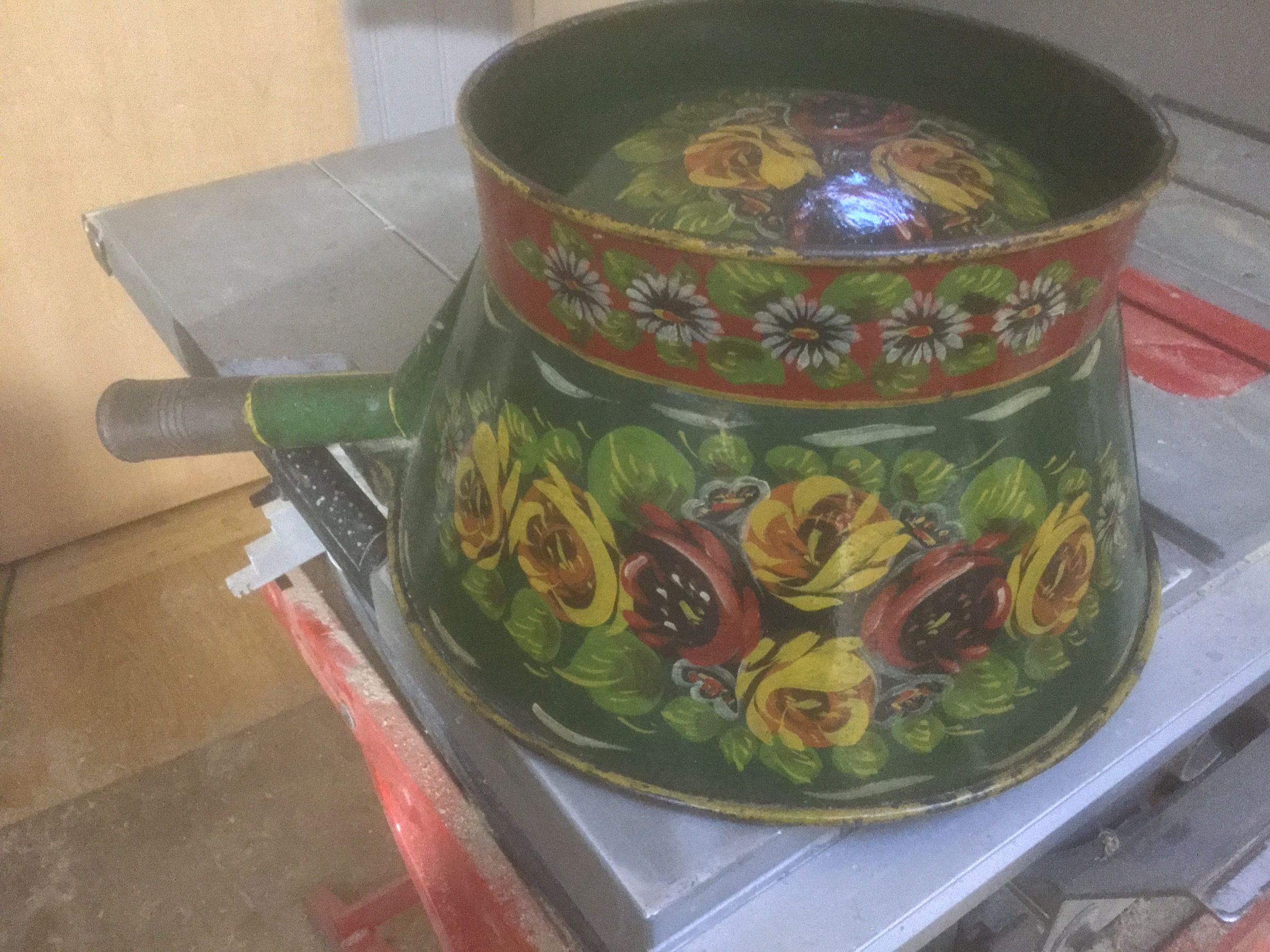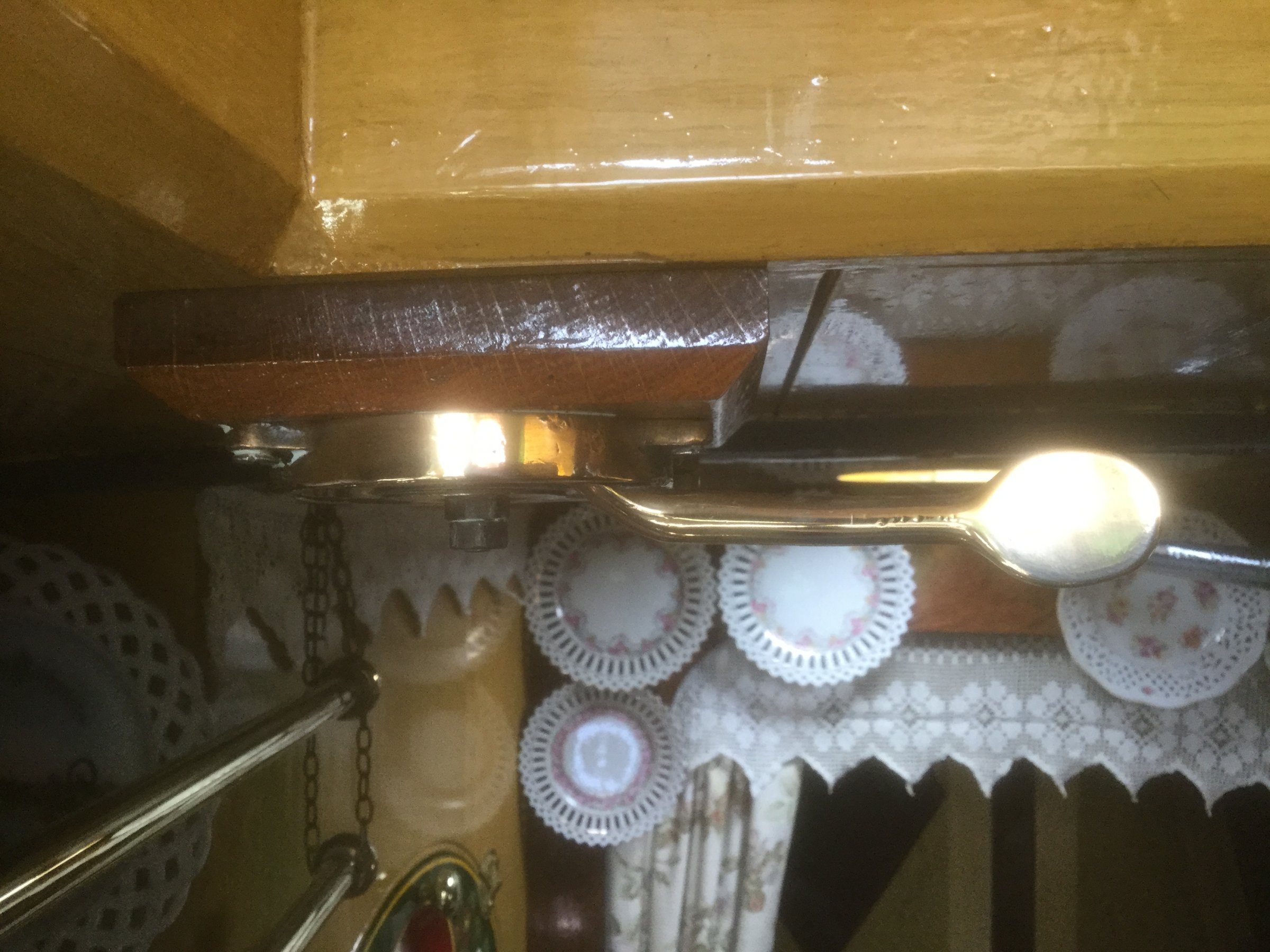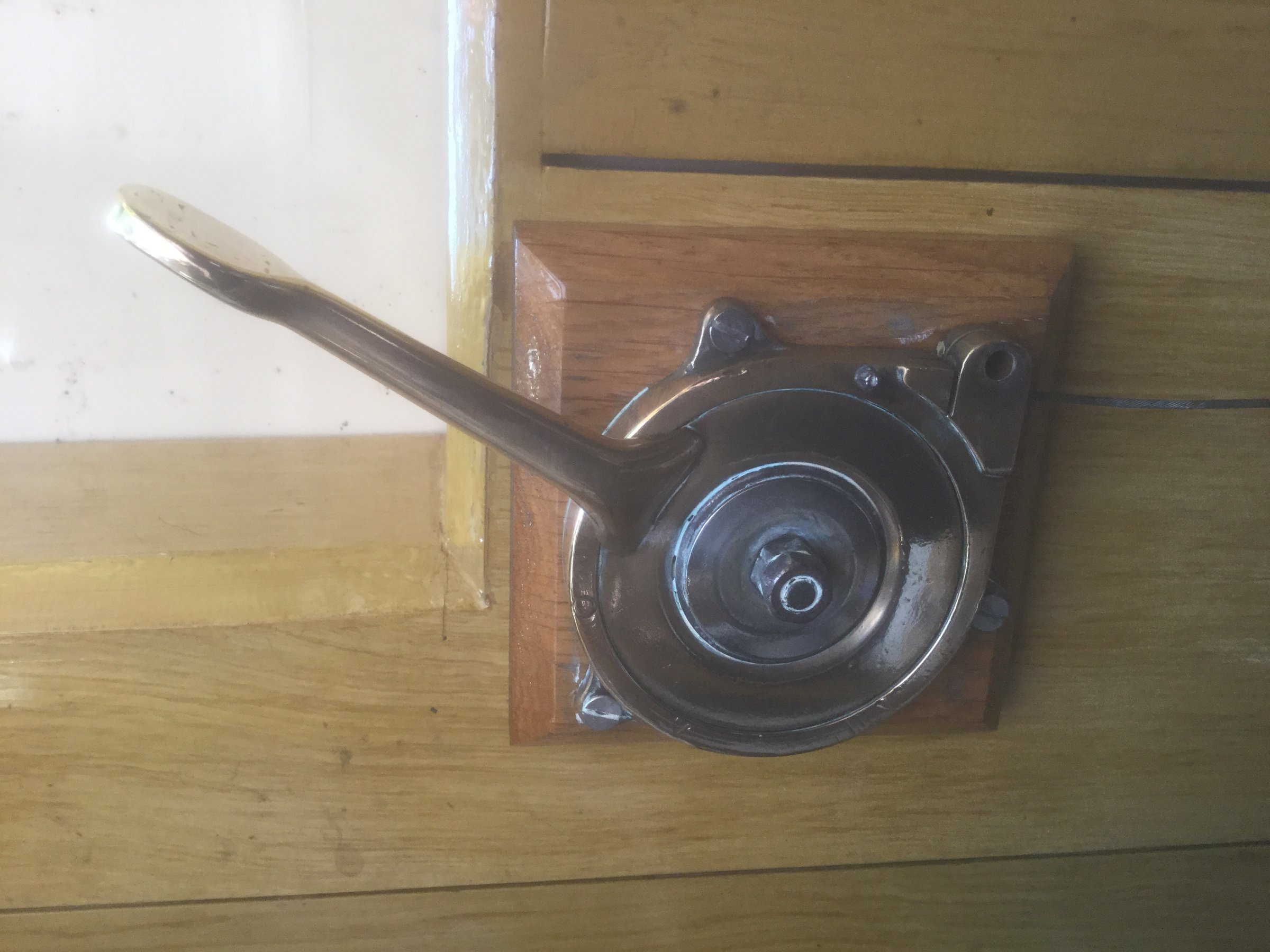

Steve Priest
Member-
Posts
148 -
Joined
-
Last visited
Content Type
Profiles
Forums
Events
Gallery
Blogs
Store
Everything posted by Steve Priest
-
Which , as far as I know, were a waterways addition. I think it is likely that this is in the GUCCC era, if it is waterways it must be fairly early, I wouldn’t doubt 1940’s myself. The motor still has a full size breastwood, the later Waterways replacement ones stopped further forwards, with the deck lid mounted on separate blocks of wood. The butty, seemingly still loaded, doesn’t have much weight in it, but it must have taken a long time to unload if they are doing it one stick at a time Kit Gayford did have a big Woolwich with a big Ricky butty - Battersea and Uttoxeter, but I am not suggesting that is what they are. Has anyone else noticed the poser in the motor’s back end?
-
Yes, that’s the one
-
About five years ago we built a 70’ Northwich shaped working boat which ended up in Ian Rothen’s fleet as a crane boat under the name Hebe ( I think ). It was built for a private customer as a carrying boat, but never was used as such, and whilst still not a carrying boat in the conventional sense it is out doing a job of work. I haven’t and recent photos though Steve
-
No problem, David, Newbury was built at Braunston for Roger and Jackie Barnes in about 1980. Simon and Rex both worked there, but Simon had not long started boatbuilding at the time. I didn’t work there, I started my boatbuilding career at the WFBCo in 1982. John and Madeleine Forth bought Newbury when they started coaling, first using the Newbury as a single boat but later with the butty Meteor. They decided that working with two motors would be better for them, hence they sold Meteor and ordered Newdigate from me. I am pretty sure that I built it in 1993, and whilst John did work on several jobs for or with me, he didn’t have any physical input into Newdigate as he was away coaling whilst it was being built. When they started to wind down the coaling they converted Newbury which was eventually sold on, and since John died Madeleine has converted Newdigate which she still owns Steve
-
I didn’t realise that I had changed my name to Barry Morsde
-

Braunston Historic Boat Rally 2019
Steve Priest replied to David Schweizer's topic in History & Heritage
I’ll have to own up, Hasty was built at Brinklow Boat Services, it’s one of mine. I wouldn’t call it a replica myself though, there are significant differences between this and the old ( second ) Hasty ( length, sheer to hull and cabin etc) - built to resemble I think sums it up better. It does have and old stem iron and t stud though, if my memory serves me correctly ex Clevanda, which was formerly Alfred Matty’s tug Susan? Does that make it historic? -
I never knew what it was called, but it was a fibrous board material half an inch thick, it was fitted between, not over, the steel framing which was left exposed. It was fitted with brass machine screws which were drilled and tapped through the cabin sides and roof, and then ground flat on the outside. If anyone has stripped the paint off an original Northwich cabin and wondered what all the brass dots are - that’s it.. The furniture was then fitted using deal boarding. With all the exposed steel framing they must have run with condensation, hence the reason that BW cut most of the cabins off the big Northwiches and replaced them with wood. Many that did survive were re- lined with t&g in a more conventional manner, which seems to me a far better idea than cutting them off, but the t&g lining was a later modification and not as original. This was not only true of little Northwiches, but of all the Northwich Grand Union boats. When Ian Kemp restored Sculptor he lined the cabin in the original fashion, as we did at Brinklow when we did the Scorpio. I believe that the butties Leo and Malus were done in that as well.
-
Yes, I think that is exactly so, the post war period is still about within living memory and was better recorded, certainly photographically, and I think in a lot of cases people look to this period for historical reference, and tend to overlook what went on before. I am pretty sure that this applies to graining. When the number ones were working some boats seem to have been extremely well decorated, far more so than the fleet boats. I recall hearing that Charles Lane would pay the boatyard more to make sure that his boats were the best painted, and I would imagine this included the graining as well. The Freindship’s cabin is grained in two colours, with more detailing and to a higher standard than what we would now consider normal, and I remember Ron Hough telling me that Frank Nurser used to grain the cabin beams in mahogany in earlier days. I would agree that he basic, repetitive comb graining that we are more used to was a later economy. Regarding early Grand Union cabins, there are enough photographs to suggest that grained cabins were not uncommon, if perhaps not the norm. There is a passage in Susan Woolfit’s Idle Women where she describes the cabin interior on the butty Dodona, the lower part,side bed and drawers were dark blue, and the rest was ‘white; not cream, as in the other boats, but plain white’ ( page 154 ). There are several pictures of cabin interiors of trainee’s boats, predominantly Woolwich boats, I think there was a link to a series of photos some time ago ( the Monnington collection? ) which I don’t have to hand, but I do remember thinking how rough the woodwork was. So on to rudder collars Little Woolwich, restored as built. The large washer under the collar is threaded onto the top of the rudder tube, and is tightened and screwed down onto the wooden pad beneath it. The top of the tube comes flush with the top of the washer, the spigot of the collar fits inside the tube, and the flange of the collar sits on top of the washer. The rams head, dolly, and hook are all original. Little Woolwiches differ from big ones in that the decks are completely wooden, whereas on big ones the cants and decking are mounted on a steel deck
-
Going back to graining, back in the late 80’s I was considering having a change from steelwork and taking up painting instead, and as part of this idea I did evening classes in signwork at Leamington tech. I was chatting to the head tutor about boat decoration and graining one day and he suggested that I should go in on Thursday afternoons and he would teach me how to grain properly. Of course, I jumped at the chance, and went in every week for several months. Is this standard of graining really relevant to canal painting? Probably not, but the techniques involved certainly are. Instead of undercoat we would use an oil based eggshell paint as a buff, and the big benefit of which is that it is available from decorator centres in a full range of colours, there are probably a dozen or so that would be suitable for light oak. Most proprietary scumbles come in different shades for use over a common buff, technically it is important not to have too big a contrast between the buff and the scumble, and hence if you want to alter the shade of the finished graining it is better to alter the shade of the buff to achieve this rather than altering the shade of the scumble. Raw umber is really the only pigment required to grain any shade of oak. If you want to go to town try using a couple of different shades of buff, you can use the same scumble over the top and you can get an effective contrast between panels. I too now use polyvine, but like Dave I also prefer to use the clear glaze and either use artist’s oil colours as pigments or polyvine oak stainers. By doing this you are more in control of the depth of pigment, and will need to thin it less. Again, as Dave says, don’t use a ready mixed scumble straight from the tin, it will need thinning, but this is rather to thin the density of the pigment than the viscosity. Too much white spirit will mean that the scumble will not ‘hold up’ and will sag, it is better to thin with a mixture of white spirit and refined linseed oil, in which case also add a little terebine to reduce the drying time, but NEVER EVER leave rags with scumble or linseed oil on lying around as there is a real chance of spontaneous combustion. David, how long has it been since PNE have been able to challenge the mighty Baggies? Anyway, I could go on ( oh yes I could! ) but I need an early night as I am planning a full days work on the Star tomorrow
-
I’ll own up - Dav & Pen’s can is my work. Max’s son’s can is, I believe, the same one as Innes Catto bought for the Gort. I think he was told that it was Dennis Clarke’s work, he certainly believed that it was, hence it being attributed to Dennis on the Nurser website. I think, however, that it is not Dennis’s but is by his brother Colin, and yes Alan, most of the older painting on Flamingo is Dennis’s. Here is another example of Dennis’s painting that came from Water Ouzel when we reclad the cabin some years ago Whilst talking of some of the lesser known Braunston painters, let’s see what you make of this :-
-
Colin Clarke for my money
-
Well, we didn’t manage it by Christmas, and after an abortive attempt in early February ( we went over with a lorry, but by then the surrounding land was much to soft ) we were successful a few weeks later. Belmont was moved in one piece and is now stored on private land I apologise if some have got the impression that restoration was imminent, unfortunately there are no funds available at the moment. Whilst perhaps the overall condition is somewhat better than I had expected it is still in an appalling state, and restoration would be a major undertaking, certainly considering the sort of money that butties change hands for. However, on the positive side, the prime objective was to get Belmont out of Snibston so that she wouldn’t be scrapped, and this has been achieved. Restoration may be a long way away, but at least what is left of Belmont still exists, and the potential is still there. Steve
-
Hello, Yes, the delay was due to us changing foundries in an attempt to get castings with a better finish than the ones that we were using, ( getting patterns back, altering them, replacing lost ones, supplying them to the new foundry, lead times et al ) and I am happy to say that I received a batch of castings this afternoon and they are indeed much better. We can now make more ranges and smoke boxes. As to the eye-watering price please bear in mind that there are four cast components to each smokebox plus fixings, and that they take a couple of hours each to clean up and assemble. I would hope, however, to be able to cut this down as the castings are a lot cleaner than the previous ones. If this helps anyone please pm me. Steve
-

Braunston Historic Boat Rally 2018
Steve Priest replied to David Schweizer's topic in History & Heritage
Ah! I’ve just realised what I said, the flanges on the bulkheads would have been fitted when the original roof was de- riveted, so they aren’t original either - that just leaves the pigeon box flange. -

Braunston Historic Boat Rally 2018
Steve Priest replied to David Schweizer's topic in History & Heritage
Of course, I remember, you had a look around it when it was for sale, I think the only original bits are the pigeon box angle and the flanges across both the front and rear bulkheads -

Braunston Historic Boat Rally 2018
Steve Priest replied to David Schweizer's topic in History & Heritage
Yes, that is the essence of it. Pure conjecture, but I imagine that roof may have dated from when Planet was converted to a trip boat at Earlswood in the ‘60’s -

Braunston Historic Boat Rally 2018
Steve Priest replied to David Schweizer's topic in History & Heritage
All the G.U. Motors were built with two engine room slides, Joshers only had one. When the Petter PD2s were fitted to the G.U. Motors the stbd side slide was welded up to make space for the air ducting. Planet’s engine room roof had largely been replaced, and only one slide (port side) was fitted at that time, we subsequently replaced it again a couple of years ago, and the current owner decided to stick with one slide then as well. As for Star, the welded steel cabin and engine room was too high and the roof was too wide, we lowered the sides and fitted a new roof around 14 years ago which made it proportionally correct, although still all welded. We fitted two slides at that time. Aquila’s engine room, which is completely new (apart from the doors) was also built with two slides as I was trying to make it as accurate as I could. I also riveted (rather than bolted ) the engine room roof on as per original - the front bulkhead unbolts to get the engine out. -

Where is the throttle? (Large Woolwich as new)
Steve Priest replied to Laurence Hogg's topic in History & Heritage
Nope, that’s the cable -

Where is the throttle? (Large Woolwich as new)
Steve Priest replied to Laurence Hogg's topic in History & Heritage
Yes, it may well be, it was a quite a common fitting -

Where is the throttle? (Large Woolwich as new)
Steve Priest replied to Laurence Hogg's topic in History & Heritage
-
Sorry chaps, I had a look yesterday and we haven’t got any left. We will having some more made, but the foundry that we use is very busy so at the moment I couldn’t put a timescale on it Steve
-
Yes, I did get a batch cast some time ago and I think that we still have some in stock. I will check tomorrow and let you know
-
Regarding the Tomlow range, yes, we are still producing them, but we decided to change foundries earlier in the year, and whilst I had expected to have a batch of castings by now (in fact, I had expected to have finished the ranges by now), I am still waiting. There aren’t as many foundries as there used to be, and the good ones seem to be very busy. I would have to admit that I haven’t pressed them as hard as I might have done because of all the other things going on, but rest assured that we fully intend to continue to produce them in both two and three door versions, supply Midland Chandlers, and retail them ourselves. In comparison with the Epping, the grate size and firebox capacity is the same, the body of the range is very similar, but the top has an overhang on the front and sides which means that they need a space a couple of inches wider than an Epping, so they are probably not suitable for the O P’s needs Steve
-
Nope, all that is for is to rest a plank on, although I would admit that it will be of much more use whilst I am replacing the plate work rather than chopping it off
-
Ok, it is, as most of you know, the Star, ex Water Rambler. I have been cutting off the top bends which were fitted some years ago and will be replacing them with something hopefully more convincing. I took some photos and thought that we might have some fun with it. The second photo is more or less back to where waterways cut it, I might try to post another photo when the work is finished Steve







